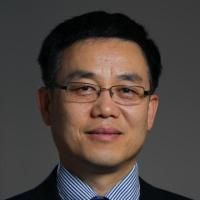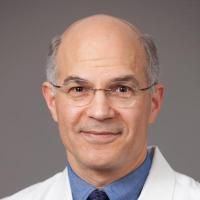Human umbilical cord blood-derived endothelial cells reendothelialize vein grafts and prevent thrombosis.
Date
2010-11
Journal Title
Journal ISSN
Volume Title
Repository Usage Stats
views
downloads
Citation Stats
Abstract
OBJECTIVE: To accelerate vein graft reendothelialization and reduce vein graft thrombosis by infusing human umbilical cord blood-derived endothelial cells (hCB-ECs) because loss of endothelium contributes to vein graft thrombosis and neointimal hyperplasia. RESULTS: Under steady flow conditions in vitro, hCB-ECs adhered to smooth muscle cells 2.5 to 13 times more than ECs derived from peripheral blood or human aorta (P
Type
Department
Description
Provenance
Subjects
Citation
Permalink
Published Version (Please cite this version)
Publication Info
Brown, MA, L Zhang, VW Levering, JH Wu, LL Satterwhite, L Brian, NJ Freedman, GA Truskey, et al. (2010). Human umbilical cord blood-derived endothelial cells reendothelialize vein grafts and prevent thrombosis. Arteriosclerosis, thrombosis, and vascular biology, 30(11). pp. 2150–2155. 10.1161/ATVBAHA.110.207076 Retrieved from https://hdl.handle.net/10161/31545.
This is constructed from limited available data and may be imprecise. To cite this article, please review & use the official citation provided by the journal.
Collections
Scholars@Duke

Lisheng Zhang
My research efforts involves studying the pathogenesis of vein graft neointimal hyperplasia and atherosclerosis.
The greatest amount of my time in the past years has been devoted to developing and characterizing our interposition vein graft model in mice. This model allows us to use IVC to carotid artery transplants between congenic mice. These transplants allow us to ask the questions about which gene products contribute to the pathogenesis of vein graft disease. In addition, I have used carotid artery to carotid artery transplants to study the role of TNF receptors in atherosclerosis. For these studies, we have used apolipoprotein E-deficient mice as graft recipients.
By using mouse vein graft model we demonstrate that most of the neointimal cells in vein grafts originate from cellular pools outside of the vein graft at the time of its implantation. The importance of this work relates to our persistent inability to treat vein graft disease in human beings. The second work demonstrates that expression of the tumor necrosis factor receptor-1, even in just in the vein graft cells themselves, contributes to the pathogenesis of vein graft neointimal hyperplasia. In this project, I surgically created chimeric mice to demonstrate molecular mechanisms by which the tumor necrosis factor receptor-1 aggravates neointimal hyperplasia, a process that is believed to lay the foundation for accelerated atherosclerosis in vein grafts.
I have also adapted my vein graft procedure in mice to ask questions about the arterial wall’s role in atherosclerosis. This atherosclerosis model involves making carotid interposition grafts not with veins, but with the carotid artery of congenic mice, and placing them into the carotid artery of spontaneously atherogenic mice that are deficient in apolipoprotein E.
I plan to continue our studies related to the role of inflammatory cytokine receptors in neointimal hyperplasia and atherosclerosis. In addition, I envision extending this work with the surgical models I have created in mice.

Lisa L Satterwhite
Molecular epidemiology of environmental exposures, pesticide exposure and Parkinson’s disease, Cyanobacterial harmful algal blooms and ALS, and creating climate change resilient rural communities.
IN THE NEWS
2024
2023
https://radx-up.org/grants/rapid-research-pilot/rp2-awardees/
2022
https://dataclimatehealth.duke.edu/teams/
2015
https://www.jyi.org/2015-february/2015/2/1/a-day-on-the-farm-lisa-satterwhites-research-profile

Neil J. Freedman
Our work focuses on atherosclerosis-related signal transduction and the genetic bases of atherosclerosis and vein graft failure, both in vitro and in vivo. We investigate the regulation of receptor protein tyrosine kinases by G protein-coupled receptor kinases (GRKs), and the role of GRKs and β-arrestins in atherosclerosis; molecular mechanisms of atherogenesis associated with the dual Rho-GEF kalirin, the F-actin-binding protein Drebrin, and small nucleolar RNAs (snoRNAs) of the Rpl13a locus. For in vivo modeling of atherosclerosis and neointimal hyperplasia, we use mouse carotid artery bypass grafting with either veins or arteries from gene-deleted or congenic wild type mice, as well as aortic atherosclerosis studies and bone marrow transplantation. To study receptor phosphorylation, signal transduction, and intracellular trafficking, we employ primary smooth muscle cells, endothelial cells, and macrophages derived from knockout mice, as well as cells treated with RNA interference.
Key Words: atherosclerosis, G protein-coupled receptor kinases, arrestins, desensitization, phosphorylation, receptor protein tyrosine kinases, smooth muscle cells, neointimal hyperplasia, Rho-GEF, Drebrin, snoRNAs.

George A. Truskey
My research interests focus upon the effect of physical forces on the function of vascular cells and skeletal muscle, cell adhesion, and the design of engineered tissues. Current research projects examine the effect of endothelial cell senescence upon permeability to macromolecules and the response to fluid shear stress, the development of microphysiological blood vessels and muscles for evaluation of drug toxicity and the design of engineered endothelialized blood vessels and skeletal muscle bundles.
Unless otherwise indicated, scholarly articles published by Duke faculty members are made available here with a CC-BY-NC (Creative Commons Attribution Non-Commercial) license, as enabled by the Duke Open Access Policy. If you wish to use the materials in ways not already permitted under CC-BY-NC, please consult the copyright owner. Other materials are made available here through the author’s grant of a non-exclusive license to make their work openly accessible.
